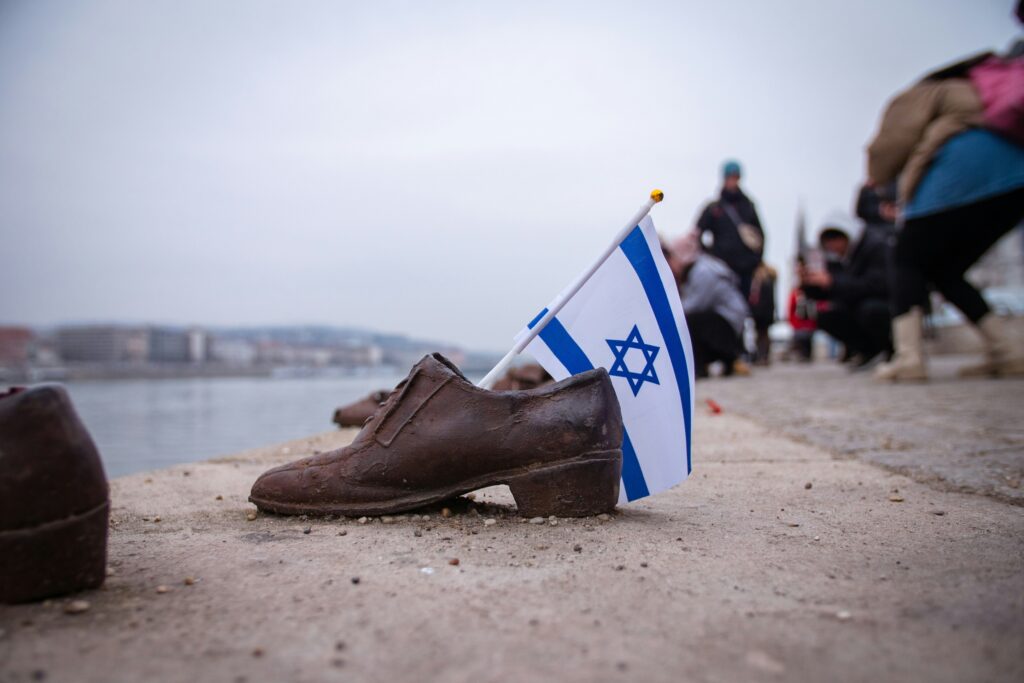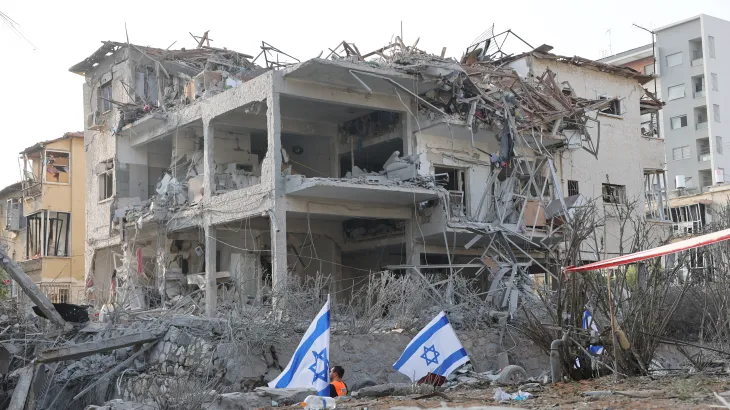
Tensions between Israel and Iran have escalated to dangerous levels, bringing the Middle East to a boil once more. The conflict landscape has changed significantly as 2025 progresses. Recent incidents have brought to light an alarming fact: the frequency of missile and drone attacks is increasing, resulting in catastrophic civilian casualties. Why is there an increase in aggression? What changes have these actions brought about in the region’s dynamics?
We will get right to the point in this blog post by breaking down the salient features of recent attacks, evaluating the humanitarian effects, investigating potential points of escalation in the future, and analyzing global reactions to this continuing crisis. It’s critical to remain informed about the reasons behind Iran’s increased attacks on Israel, given the dramatic updates on military conflicts and audacious tactics being used by both sides. Come along as we examine these important questions related to one of the most important geopolitical conflicts of our time.
Iran’s Missile and Drone Attacks: Key Highlights, Civilian Casualties and Humanitarian Impact
Iran has increased its drone and missile attacks on Israel in 2025. The fact that these strikes frequently target civilian areas raises concerns about collateral damage, making them more than just military operations.
Numerous families are caught in the crossfire, and reports show a sharp increase in civilian casualties. Communities have been forced to seek shelter as a result of the aerial bombardment that has damaged hospitals and schools.
It has a significant humanitarian impact. People who are displaced struggle with a lack of access to basic essentials like food and healthcare. As security conditions worsen, aid organizations find it more difficult to provide relief.
Additionally, these attacks heighten regional tensions, which makes civilians who yearn for stability more fearful. As each attack progresses, it becomes evident that the effects go well beyond the immediate devastation, impacting livelihoods and lives in all impacted areas.
Background Information on the Israel-Iran Conflict
Beginning with the Iranian Revolution of 1979, the Israel-Iran conflict has a long history. Iran changed from a monarchy that supported the West to an Islamic Republic at this crucial juncture. Tensions with Israel increased as a result of the leadership change, which also changed regional dynamics.
Their relationship is made more difficult by the opposing ideologies of both countries. Iran promotes anti-Zionism, but Israel sees Iran as its biggest threat because of its support for extremist organizations like Hezbollah and its nuclear aspirations.
The Middle East has seen a rise in proxy conflicts over time. These conflicts are a reflection of larger geopolitical conflicts between both allies and enemies. Misunderstandings frequently worsen rapidly as each country vies for supremacy in a volatile area.
This background creates the conditions for ongoing conflicts that still influence modern international relations. As both nations traverse this delicate terrain characterized by ambition and hostility, the stakes are still very high.
Current Tensions Between Israel and Iran
The long-standing hostility between Iran and Israel has gotten more intense in recent years. With military posture increasing on both sides, both countries are on high alert.
Israeli defense circles are alarmed by Iran’s increased missile and drone programs. According to reports, these developments pose a threat to regional stability as well as to Israel.
Israel is still carrying out airstrikes against Iranian targets in Syria and Iraq at the same time. Disrupting Iranian supply routes to extremist organizations like Hezbollah is the aim.
Both sides’ attempts at cyberwarfare have also increased tensions. While defending their own weaknesses, each country aims to destroy the infrastructure of the other.
Media coverage highlights a stark rise in rhetoric as leaders exchange sharp warnings. With public sentiment swaying heavily toward nationalism, any misstep could spiral into wider conflict, drawing international focus back onto this volatile region.
Possible Triggers for Future Conflict
The Israel-Iran conflict is still being shaped by rising tensions. At any time, a spark could be ignited by the aggressive posture of either side.
These tensions are made worse by the ongoing proxy conflicts throughout the region. This geopolitical chess game frequently uses the militaries in Iraq, Syria, and Lebanon as pawns. Retaliation from the opposing side could follow any notable victory for one side.
Another possible trigger is cyberwarfare. Iran has been using more advanced cyberattacks to target Israeli infrastructure. Direct military reactions could be triggered by a successful breach.
Furthermore, both countries are heavily impacted by developments pertaining to nuclear capabilities. Preemptive strikes could be triggered by perceived threats or new developments, especially if Israel believes its security is in jeopardy.
As leaders attempt to incite nationalistic feelings among their constituents, domestic pressures within each nation may also encourage aggression and drive them toward more hawkish policies.
Potential Outcomes of a Military Confrontation
Devastating outcomes could result from an Israeli-Iranian military conflict. Because both countries have highly developed weapons, there is concern that a long-term conflict could spread throughout the entire region.
Significant infrastructure damage in both countries would probably be among the immediate effects. Targeted attacks could occur in urban areas, causing widespread evacuations and mayhem among the populace.
Regional allies might also be dragged into the conflict. As proxy forces support either side, nations like Syria or Lebanon may turn into battlefields.
There would also be immediate economic consequences. Unrest in one of the world’s vital energy corridors is predicted to cause oil prices to soar.
Almost instantly, humanitarian crises would arise. International aid efforts would be severely hampered by the increased tensions, with civilians caught in the crossfire and little access to basic services.
Any resolution process would be made even more difficult by this scenario, which also calls into question nuclear deterrence.
International Involvement and Impact
The level of international engagement in the Israel-Iran conflict has increased dramatically. A complicated web of alliances and enmities is being navigated by major powers like the US and Russia.
The majority of Western countries support Israel because they see it as a strategic ally in the fight against Iran’s influence. This assistance consists of intelligence sharing, military assistance, and diplomatic support in global fora.
However, nations like China have expressed interest in strengthening their relations with Iran. Despite the continued sanctions against Tehran, they see economic opportunities.
It has a significant humanitarian impact. Both countries see a sharp increase in civilian casualties as tensions rise. Despite the UN’s repeated calls for ceasefires, member states’ politicized responses present difficulties.
Millions of people directly caught in the crossfire of this conflict could be affected by the actions of global players as they navigate these complex dynamics, which could either make matters worse or make them better.
Analyzing the Role of Nuclear Weapons in the Conflict
An important factor in the Israel-Iran conflict is nuclear weapons. Both countries believe that having nuclear weapons is crucial to maintaining both regional dominance and national security.
Global concerns have been raised by Iran’s nuclear program. Many worry that it could further destabilize the Middle East if it is fully developed. Israel and its neighbors are also alarmed by the possibility that Iran could produce a bomb.
In contrast, Israel’s position on its own nuclear arsenal is still unclear. In diplomatic negotiations, this strategic opacity is used as leverage as well as a deterrent.
The existence of nuclear weapons complicates military plans. Any conflict has the potential to have far more disastrous outcomes than traditional combat.
As tensions rise, disarmament discussions frequently come up. Finding common ground is still difficult, though, because both sides have strong opinions. These weapons cast a huge shadow over any future attempts at peace.
Steps to Prevent Escalation and Promote Peace
There are various actions that can be taken to manage the intricate terrain of the Israel-Iran conflict and stop it from getting worse. First and foremost, it is crucial to promote open channels of communication between the two governments. Before they turn into military conflicts, grievances can be resolved through diplomatic discussions.
Second, using international mediators could help to facilitate talks that could result in a peace deal or ceasefire. In this sense, institutions such as the United Nations play a crucial role. Their participation could promote humanitarian assistance while guaranteeing that all parties are held responsible for their deeds.
Third, encouraging grassroots efforts to increase public understanding can change attitudes on both sides. Programs for cultural exchange and cooperative community initiatives may lessen hostility and promote respect for one another.
To lessen the threat posed by either side’s offensive capabilities, it is also essential to keep an eye on missile development and arms sales. International supervision is also necessary to ensure transparency in nuclear operations.
Promoting regional stability through business alliances could encourage collaboration rather than hostilities. The incentives for war may be considerably reduced by fostering interdependencies among Middle Eastern countries.
Despite the uncertainty surrounding Israel-Iran relations, putting these strategies into practice offers hope but also requires commitment. The future depends on everyone working together to promote communication instead of devastation.
